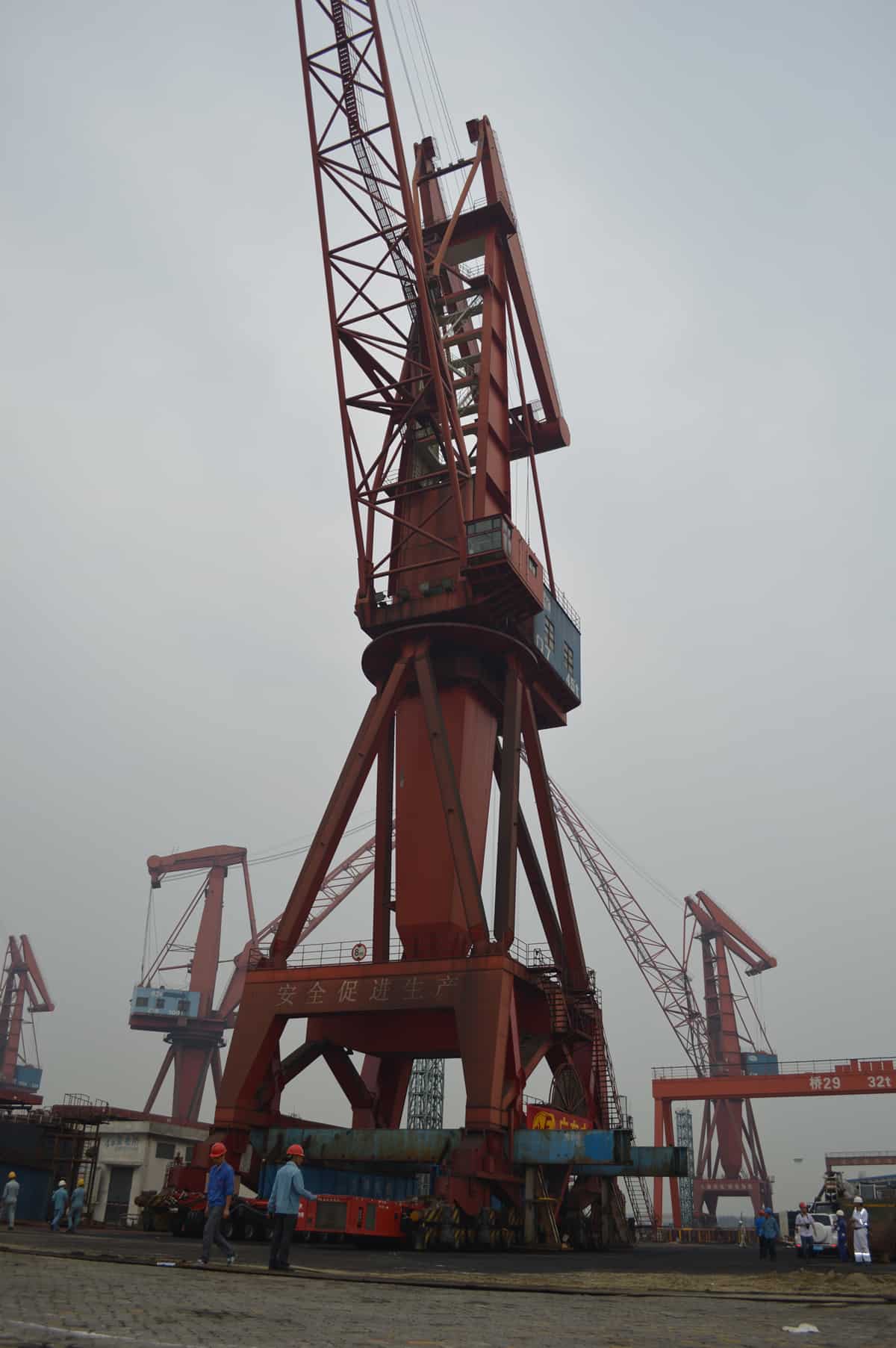
Disassemble method
Portal crane is the most common lifting machinery in ports, docks and shipyards, lifting capacities ranging from a few tons to several hundred tons. Due to the expansion and reconstruction, the location of the portal crane probably has to be changed.
The conventional disassemble method to relocate the portal crane is to dismantle it first, then transport in sections and reassemble them at a new location. The super weight and height of the portal crane hamper the dismantling and assembling operation. The method is very time and labor-consuming.
Rail transport method
Use wheels from portal crane and rails mounted on the ground. This method needs to calculate the ground pressure, then compact the ground to make sure the pressure is enough. The moving direction is not easy to change during the relocation process.
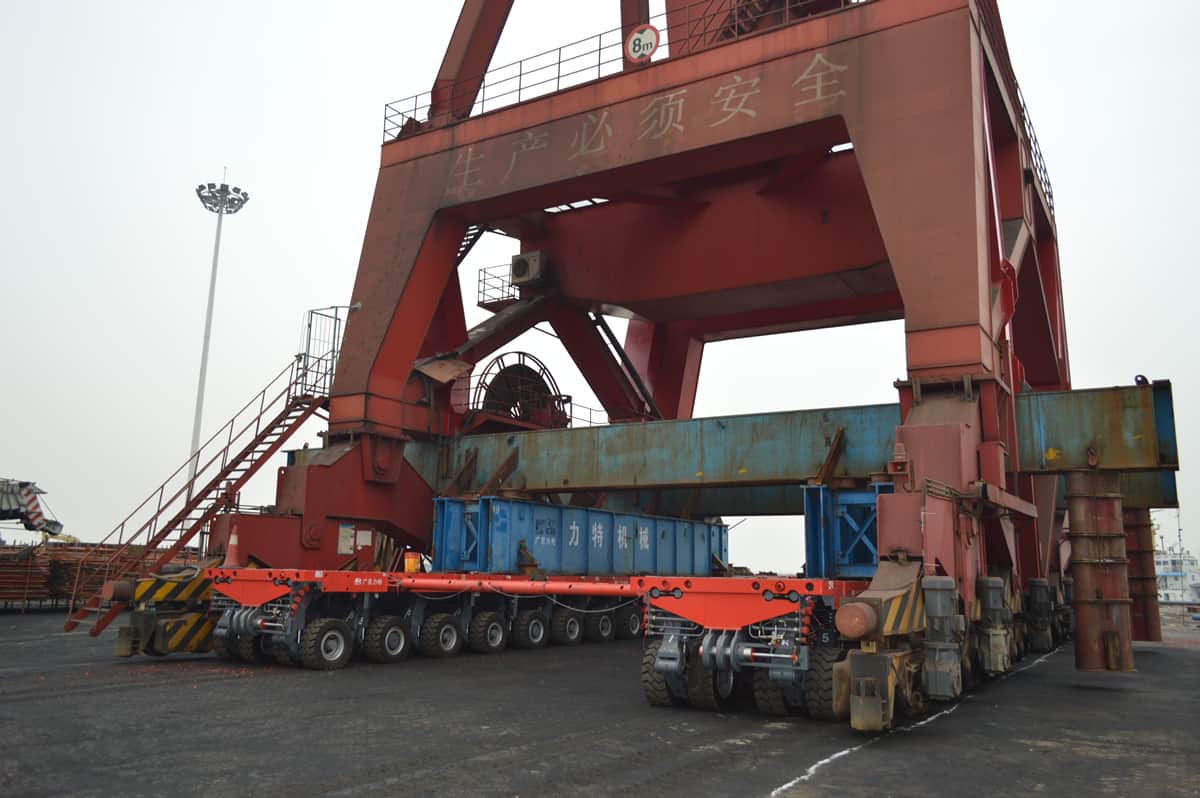
SPMT method
Nowadays the demand to transport the portal crane is getting higher, integral transport and installation in one piece become the mainstream.
With the participation of self-propelled modular transporter, the relocation of the crane will be efficient and convenient. Which can also maximize the function of the port as well.
Due to the SPMT is equipped with many tires, it will help to protect the ground from being damaged by the overload portal crane. Compare to the rail transport method, we do not need to put a lot of labors and time on road construction.
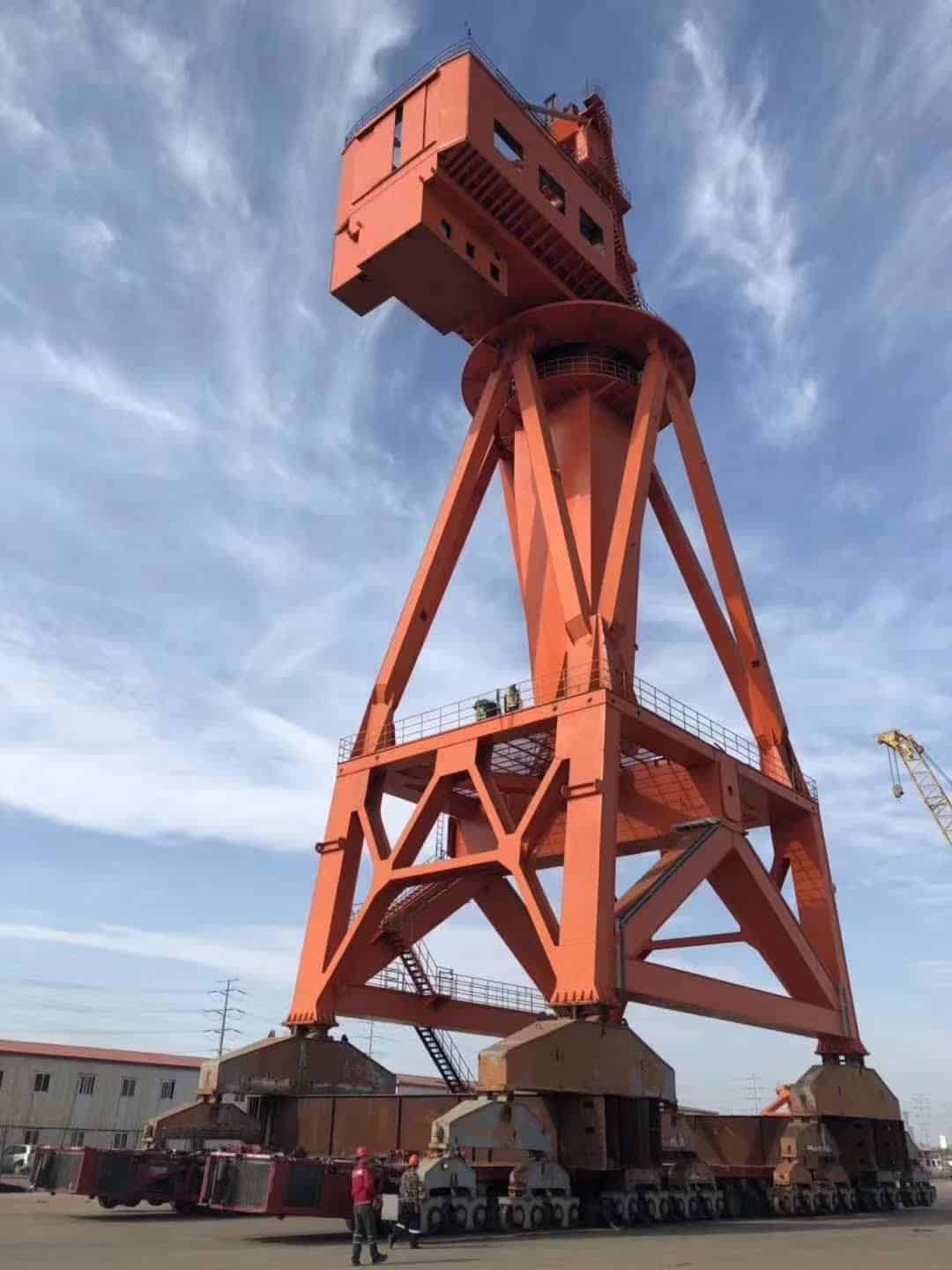
Wheel sets are off the ground seeing from the picture 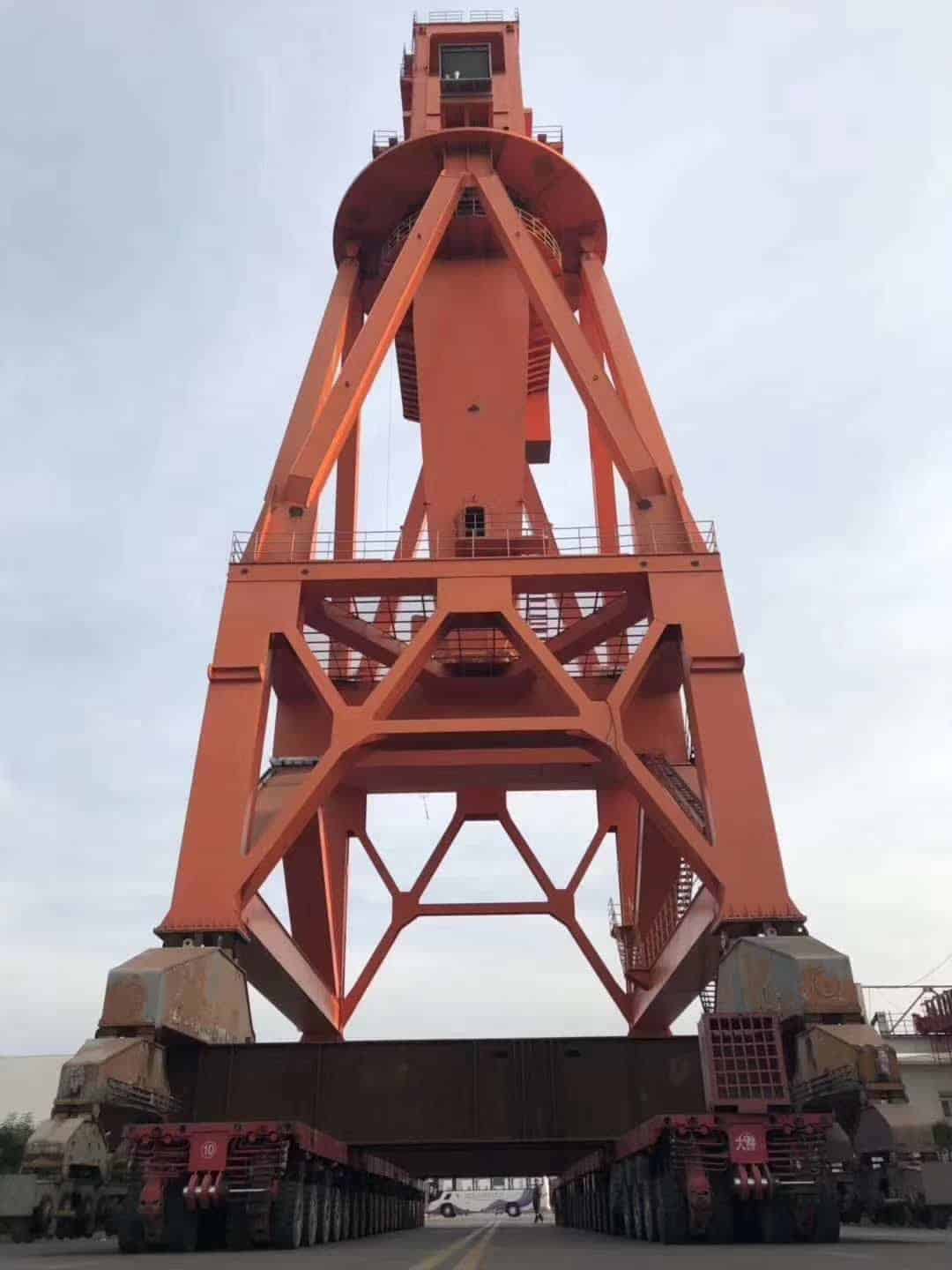
Portal crane transport with two units of SPMTs synchronized moving
Equipment needed to transport portal crane
- SPMT
- Distribution bolsters, connected with the portal crane
- Supporting piers, connected with above bolsters
- Positioning blocks
- Removable limit blocks
- Each bolster has two landing gears to prevent tilt
- Reinforcing rib to connect bolsters
At least four units of distribution bolsters are needed, to distribute the weight of the portal crane evenly.
Preparation work of ground
- Ground pressure calculation based on the weight of the portal crane and the SPMTs
- Foundation leveling
- Ground compaction by sandstone
- Covered by steel plates on the route of SPMTs
- Double-check the ground by simulation test via SPMT with a counterweight equate with the weight of the transporting portal crane
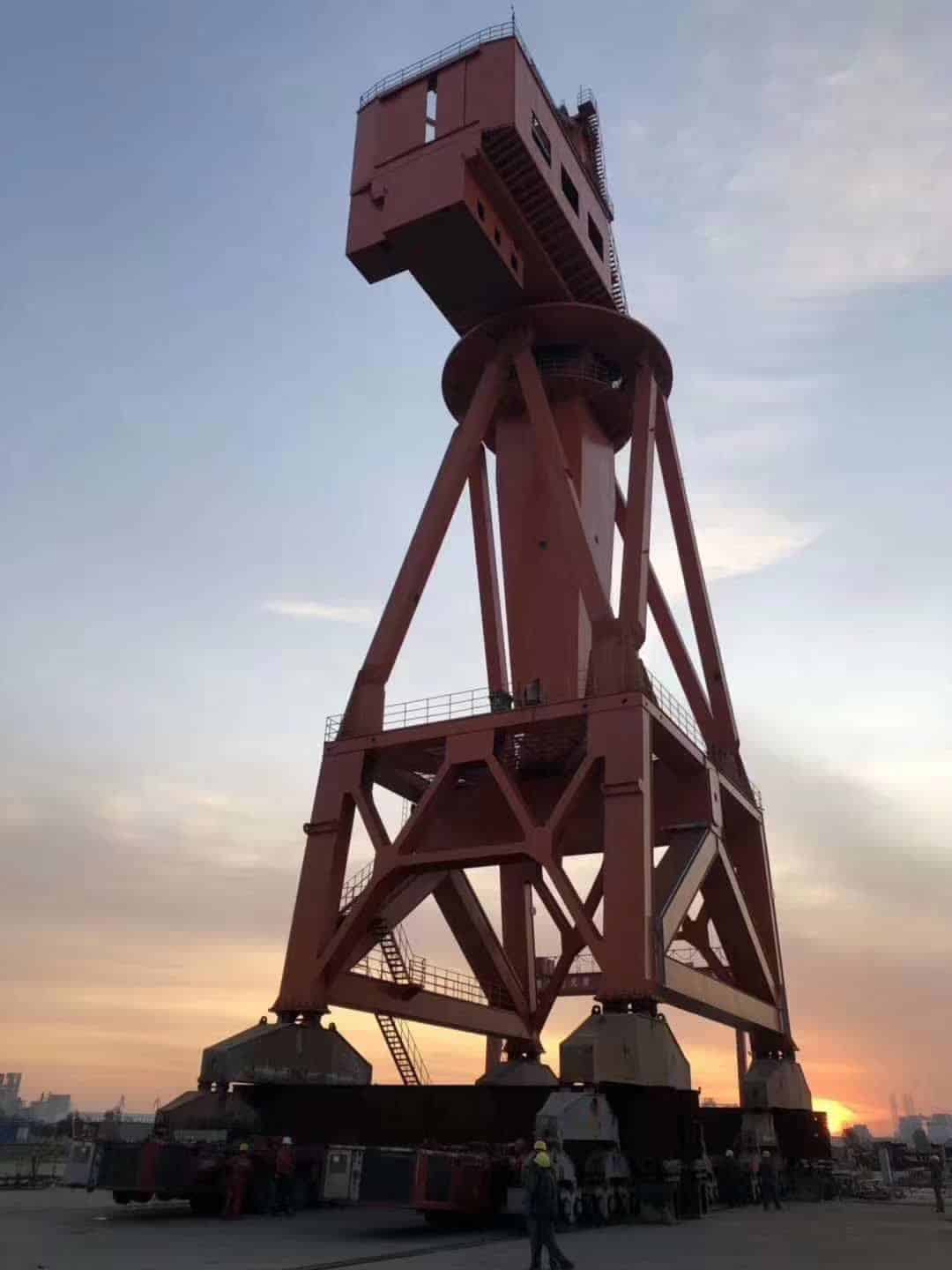
Tall portl crane in transit without lifting boom 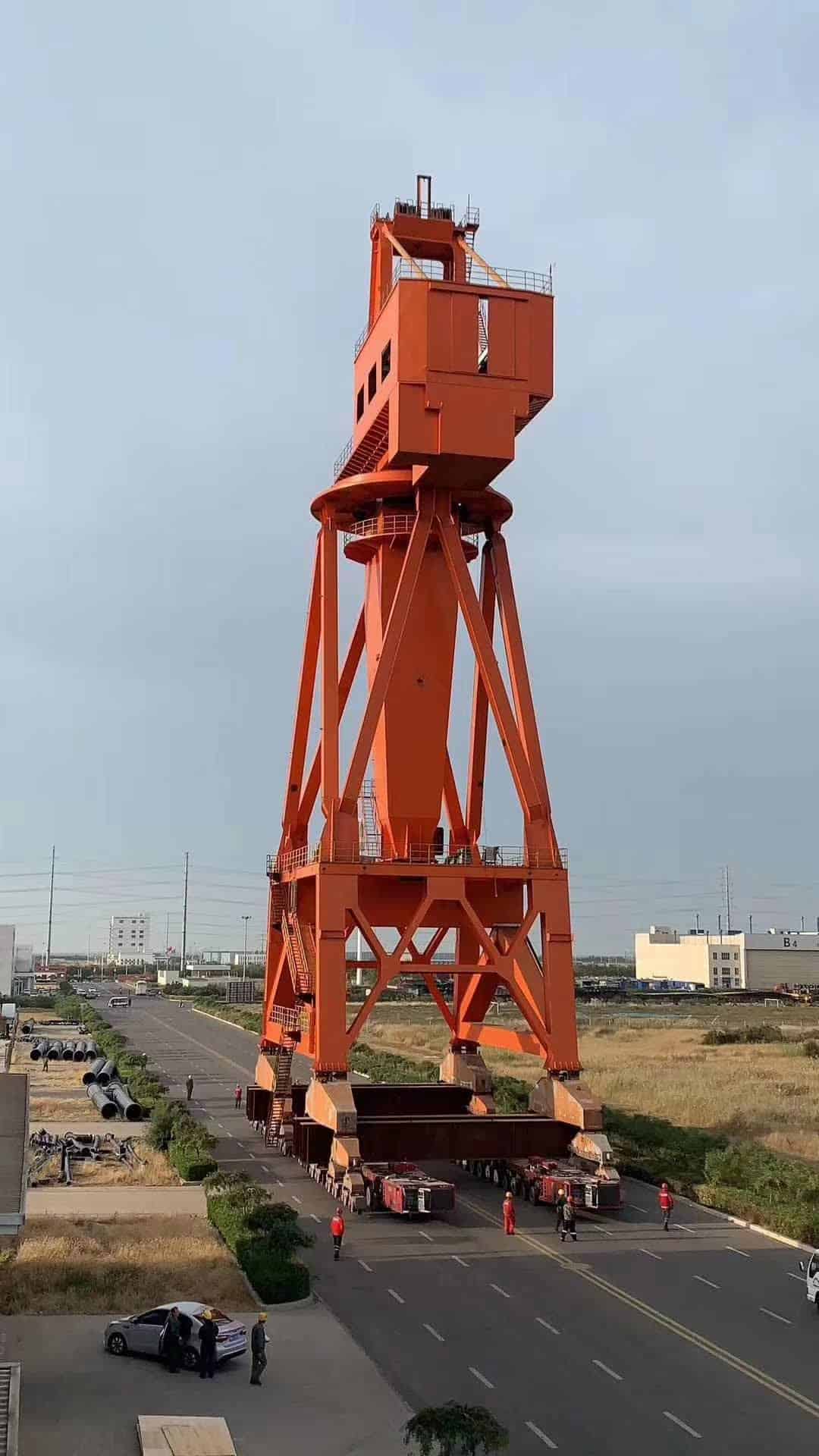
Portal crane transported by SMPT on wide road
Preparation work of portal crane
- Reset the portal crane
- Centering the gravity by luffing the boom
- Lock the crane boom
- Limit (temporary welding) wheelsets of the crane
- Fix(temporary welding) other parts of the crane which may sway during transport
- Ensure the bending resistance, shear resistance and stability of the cross beam of the portal crane
- Weld limit blocks at each hinge of the portal crane to avoid sway while the crane is transported by SPMT


